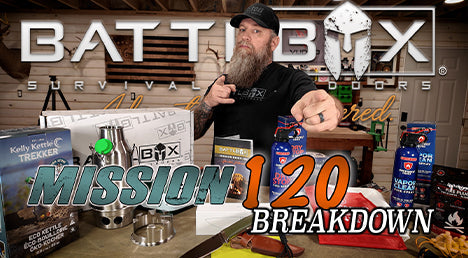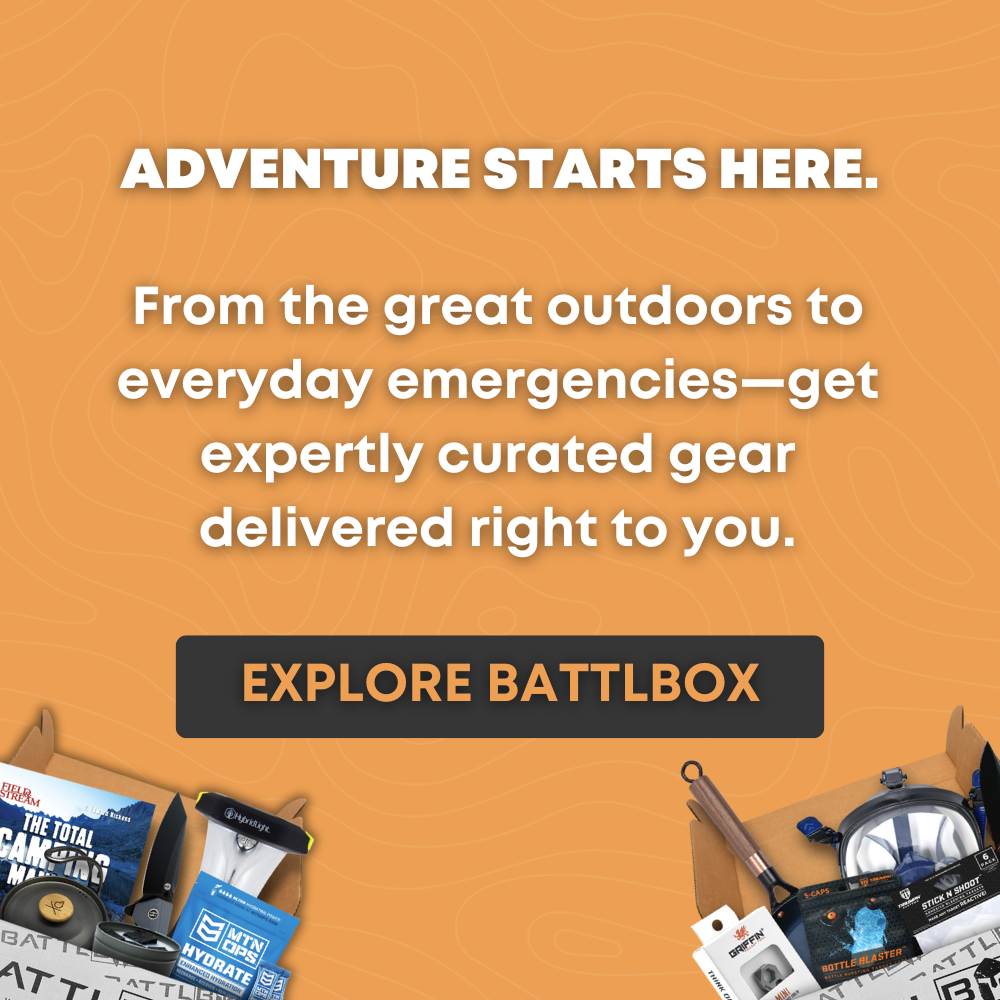Battlbox
How to Find Edible Mushrooms in the Wild
Table of Contents
- Introduction
- Understanding Mushroom Basics
- Safety First: Guidelines for Foraging
- Identifying Edible Mushrooms
- Recognizing Poisonous Mushrooms
- Foraging Techniques
- Cooking and Storing Edible Mushrooms
- Conclusion
- FAQ
Introduction
Imagine stepping into a lush, vibrant forest, where the air is filled with the earthy scent of damp soil and the rustle of leaves. As you wander deeper into the woods, you stumble upon a treasure trove of wild mushrooms, each one a potential culinary delight. The excitement of foraging for edible mushrooms is not only a thrilling adventure but also a rewarding way to connect with nature and enhance your outdoor experiences. However, the world of wild mushrooms is fraught with both wonder and risks. The line between edible and poisonous can be razor-thin, making it crucial for foragers to be well-informed and cautious.
Mushroom foraging has a rich history, with many cultures relying on wild fungi as a source of nutrition and flavor. In recent years, the popularity of foraging has surged, with food enthusiasts and outdoor adventurers alike seeking to uncover the hidden gems of the forest. Yet, as the interest in foraging grows, so does the need for knowledge about mushroom identification, safety, and culinary uses.
This blog post aims to equip you with the essential information on how to find edible mushrooms in the wild. By the end of this comprehensive guide, you will understand the key aspects of mushroom foraging, including identification tips, safety guidelines, and the best practices for harvesting and cooking wild mushrooms. You'll also discover how to enhance your outdoor adventures with the right gear from Battlbox, your trusted source for hand-picked outdoor, survival, and tactical gear.
Understanding Mushroom Basics
What Are Mushrooms?
Mushrooms are the fruiting bodies of fungi, which can grow in a variety of environments, including forests, meadows, and even urban areas. They play essential roles in ecosystems by breaking down organic matter and recycling nutrients. While there are thousands of mushroom species worldwide, only a fraction are edible, and even fewer are considered culinary delights.
Types of Mushrooms
Mushrooms can be broadly categorized into three groups:
-
Edible Mushrooms: These mushrooms are safe to eat and often sought after for their flavor and nutritional value. Common edible mushrooms include chanterelles, morels, and porcini.
-
Inedible Mushrooms: These species may not be toxic but are not pleasant to eat due to their tough texture or unpleasant taste. Examples include certain types of puffballs and some species of the Russula genus.
-
Poisonous Mushrooms: These mushrooms can cause serious illness or even death if ingested. It is crucial to be able to identify these mushrooms to avoid dangerous situations. Notorious poisonous mushrooms include the death cap (Amanita phalloides) and the destroying angel (Amanita bisporigera).
The Importance of Identification
Identifying mushrooms accurately is crucial for safe foraging. Many edible mushrooms have toxic look-alikes that can cause severe reactions. The key to successful mushroom foraging lies in learning to distinguish between edible and poisonous varieties through careful observation and study.
Safety First: Guidelines for Foraging
Before you venture into the wild, it’s essential to equip yourself with knowledge and tools to ensure your safety. Here are some critical safety tips when foraging for mushrooms:
1. Always Be 100% Sure
Never consume a wild mushroom unless you are entirely confident in its identification. If there is any doubt, it’s best to err on the side of caution and avoid eating it.
2. Use a Reliable Guide
Invest in a reputable field guide specific to your region. This guide should include clear pictures and descriptions of both edible and poisonous mushrooms. Apps can be helpful, but they should not replace a good field guide.
3. Learn to Identify Common Edible Species
Start with a few common edible mushrooms that have no toxic look-alikes. Species such as chanterelles, morels, and porcini are great starting points due to their distinct characteristics.
4. Join a Local Mycological Group
Connecting with experienced foragers can enhance your knowledge and build your confidence. Many regions have mycological clubs that organize foraging events and educational workshops.
5. Practice Responsible Foraging
Respect the environment by foraging sustainably. Only take what you need, leaving enough for wildlife and future growth. Be mindful of local laws and regulations regarding mushroom foraging.
6. Be Aware of Allergies
Some individuals may have allergies or sensitivities to certain mushrooms. If you’re trying a new species for the first time, consume a small amount and wait to see how your body reacts before eating more.
Identifying Edible Mushrooms
Key Characteristics of Edible Mushrooms
When identifying edible mushrooms, pay attention to the following characteristics:
-
Cap Color and Shape: Edible mushrooms often have vibrant colors and distinctive shapes. For example, chanterelles are trumpet-shaped and have a bright yellow to orange hue.
-
Gills or Pores: Examine the underside of the cap. Many edible mushrooms have gills that are either free from the stem or attached. Some, like boletes, have pores instead of gills.
-
Stem Features: Look for unique features on the stem, such as rings or textures. For instance, the stem of a porcini is stout and bulbous at the base.
-
Spore Print: Taking a spore print can help with identification. Place the cap, gills down, on a sheet of paper for several hours to see the color of the spores.
Common Edible Mushrooms
Here are some popular edible mushrooms and how to identify them:
Chanterelles (Cantharellus cibarius)
- Appearance: Bright yellow to orange, trumpet-shaped with wavy edges.
- Habitat: Found in forests, often near hardwoods.
- Harvesting Season: Late summer to early fall.
Morels (Morchella spp.)
- Appearance: Honeycomb-like cap with a hollow interior.
- Habitat: Moist areas, often near ash, elm, and apple trees.
- Harvesting Season: Early spring.
Porcini (Boletus edulis)
- Appearance: Brown cap with a thick stem and a spongy underside.
- Habitat: Found in coniferous and deciduous forests.
- Harvesting Season: Late summer to fall.
Recognizing Poisonous Mushrooms
Identifying Dangerous Species
To protect yourself while foraging, it is essential to recognize poisonous mushrooms. Here are some of the most notorious toxic varieties:
Death Cap (Amanita phalloides)
- Appearance: Greenish-yellow cap, white gills, and a bulbous base.
- Habitat: Often found near oak, pine, and birch trees.
- Danger: Consuming even a small amount can be fatal.
Destroying Angel (Amanita bisporigera)
- Appearance: Pure white with a smooth cap and stem.
- Habitat: Common in forests and lawns.
- Danger: Highly toxic, ingestion can lead to death.
Tips for Avoiding Poisonous Mushrooms
-
Avoid Mushrooms with White Gills: Many toxic mushrooms, including the Amanita family, have white gills. If you're uncertain, avoid them.
-
Steer Clear of Red Caps: Mushrooms with red caps and white gills are often poisonous. Stick to mushrooms with brown, tan, or white caps.
-
Educate Yourself about Look-Alikes: Learn about common poisonous mushrooms that resemble edible varieties to avoid confusion.
-
Never Rely on Myths: Many old wives' tales about mushrooms are unfounded. For example, the silver coin test is a myth and should not be used for identification.
Foraging Techniques
Tools for Mushroom Foraging
Having the right tools can enhance your foraging experience. Here are some essentials:
-
Mushroom Knife: A sharp knife with a curved blade is ideal for cutting mushrooms at the base without damaging the mycelium.
-
Baskets: Use two baskets to separate edible mushrooms from those you are unsure about. Avoid plastic bags, as they can cause mushrooms to bruise.
-
Field Guide: Bring your field guide along for quick reference to mushroom identification.
Where to Find Edible Mushrooms
Edible mushrooms can be found in various habitats, including:
-
Forests: Look under trees, especially around the bases of oaks, pines, and birches.
-
Meadows: Some mushrooms thrive in open fields and grassy areas.
-
Near Water Sources: Moist environments, such as riverbanks and wetlands, can be excellent spots for mushroom foraging.
Responsible Harvesting
When foraging, follow these guidelines:
-
Cut, Don’t Pull: Use a knife to cut mushrooms at the base to avoid disturbing the surrounding mycelium.
-
Leave Some Behind: Take only what you will use. Leave enough mushrooms for wildlife and future growth.
-
Be Mindful of the Environment: Stick to established trails and avoid trampling on delicate ecosystems.
Cooking and Storing Edible Mushrooms
Once you’ve successfully foraged for edible mushrooms, it’s time to prepare and enjoy them. Here are some cooking tips:
Cleaning Mushrooms
- Brush Off Dirt: Use a soft brush or cloth to remove dirt and debris. Avoid washing mushrooms in water, as they can absorb moisture and lose flavor.
Cooking Methods
-
Sautéing: Quickly cook mushrooms in a hot pan with oil or butter for a delicious side dish.
-
Soups and Stews: Add mushrooms to soups and stews for added depth of flavor.
-
Stuffing: Use large mushrooms, such as portobello, as a base for stuffing with cheese, vegetables, or grains.
Storing Edible Mushrooms
-
Refrigeration: Store fresh mushrooms in a paper bag in the refrigerator for up to a week.
-
Drying: Preserve mushrooms by drying them. Use a food dehydrator or air-dry them in a well-ventilated area.
Conclusion
Foraging for edible mushrooms in the wild can be an exhilarating adventure filled with the thrill of discovery and the joy of connecting with nature. However, it is essential to approach this activity with caution and knowledge. By understanding the basics of mushroom identification, safety guidelines, and foraging techniques, you can enhance your outdoor experiences and enjoy the rewards of wild mushrooms.
As you embark on your foraging journey, consider equipping yourself with high-quality gear from Battlbox to ensure you're prepared for any outdoor adventure. Explore the Battlbox Shop for hand-picked outdoor and survival gear that complements your foraging expeditions.
Remember, the world of mushrooms is vast and diverse, and there is always something new to learn. So grab your basket, head into the woods, and embrace the adventure of finding edible mushrooms in the wild!
FAQ
What should I do if I accidentally eat a poisonous mushroom?
If you suspect you have ingested a poisonous mushroom, seek medical attention immediately. Symptoms can vary, but gastrointestinal upset is common. Always inform medical personnel of what type of mushroom you consumed.
How can I tell if a mushroom is edible?
The best way to determine if a mushroom is edible is through accurate identification. Use a reliable field guide, consult with experts, and avoid mushrooms you cannot confidently identify.
Are there any mushrooms I should avoid altogether?
Yes, avoid mushrooms with white gills, red caps, and those that resemble known poisonous varieties, such as the death cap and destroying angel. If unsure, do not eat the mushroom.
Can I forage mushrooms safely if I’m a beginner?
While beginners can forage safely, it is highly recommended to go with an experienced forager or join a mycological group to learn the basics of mushroom identification and safety.
What are some beginner-friendly edible mushrooms to look for?
Beginner-friendly mushrooms include chanterelles, morels, and porcini. These varieties are generally easy to identify and have few toxic look-alikes.
Share on:

















